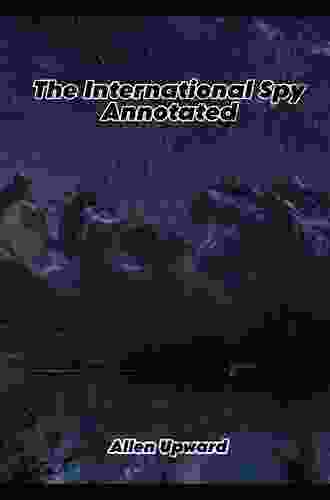Pathogen Removal in Aerobic Granular Sludge Treatment Systems: Unveiling the Delft PhD Thesis

4.4 out of 5
| Language | : | English |
| File size | : | 7753 KB |
| Text-to-Speech | : | Enabled |
| Screen Reader | : | Supported |
| Enhanced typesetting | : | Enabled |
| Print length | : | 231 pages |
| X-Ray for textbooks | : | Enabled |
| Hardcover | : | 176 pages |
| Item Weight | : | 0.144 ounces |
| Dimensions | : | 6 x 0.56 x 9 inches |
Wastewater treatment plays a pivotal role in safeguarding public health and preserving the environment. Traditional wastewater treatment systems have proven effective in removing contaminants; however, the emergence of pathogens and antibiotic-resistant bacteria poses new challenges. Aerobic granular sludge (AGS) systems have emerged as a promising solution, offering superior pathogen removal capabilities while maintaining high treatment efficiency.
This article delves into the groundbreaking research presented in the Delft PhD thesis on Pathogen Removal in Aerobic Granular Sludge Treatment Systems. We will explore the unique characteristics of AGS, its mechanisms of pathogen removal, and the innovative approaches developed to enhance its performance.
Aerobic Granular Sludge: A Novel Approach to Wastewater Treatment
AGS is a self-immobilized biofilm system that forms dense, spherical granules within wastewater treatment reactors. These granules are composed of a diverse microbial community, including bacteria, fungi, and protozoa. The unique structure and biological composition of AGS contribute to their exceptional performance in wastewater treatment.
Enhanced Settling and Compaction Properties
AGS granules exhibit excellent settling and compaction properties, allowing them to rapidly separate from treated wastewater. This facilitates efficient solids-liquid separation, reducing the amount of sludge produced and minimizing the potential for pathogen carryover.
High Organic Matter Removal
The dense microbial population within AGS granules provides a large surface area for microbial attachment and growth. This high biomass concentration enhances the removal of organic matter, including biodegradable pollutants, heavy metals, and emerging contaminants.
Pathogen Removal Mechanisms in Aerobic Granular Sludge Systems
AGS systems demonstrate superior pathogen removal efficiency compared to traditional activated sludge systems. This is attributed to several key mechanisms:
Physical Filtration
The dense structure of AGS granules acts as a physical barrier, trapping and filtering pathogens from the wastewater. The small pore size of the granules prevents pathogens from penetrating into the interior of the biofilm, reducing the risk of pathogen regrowth.
Biotic Inactivation
The diverse microbial community within AGS granules includes predatory bacteria, viruses, and protozoa that actively prey on and inactivate pathogens. These predatory microorganisms play a crucial role in reducing pathogen populations within the system.
Nutrient Competition
The high microbial activity within AGS granules leads to intense competition for nutrients. This competition limits the availability of nutrients for pathogens, hindering their growth and survival.
Innovative Approaches to Enhance Pathogen Removal in AGS Systems
Researchers are continually exploring innovative approaches to further enhance pathogen removal in AGS systems. These include:
Optimization of Process Parameters
Fine-tuning operational parameters, such as aeration rate, hydraulic retention time, and sludge age, can significantly impact pathogen removal efficiency. Optimizing these parameters can maximize the formation and stability of AGS granules, promoting optimal pathogen reduction.
Bioaugmentation
Introducing specific microorganisms, such as predatory bacteria, into AGS systems can augment the natural pathogen removal mechanisms. These microorganisms can target and eliminate specific pathogens, enhancing the overall removal efficiency.
Advanced Technologies
Emerging technologies, such as membrane bioreactors (MBRs) and ultrafiltration (UF) membranes, can be integrated with AGS systems to provide additional pathogen barriers. These technologies physically remove pathogens from treated wastewater, ensuring high-quality effluent.
Application of AGS Systems for Pathogen Removal
AGS systems have proven their effectiveness in removing pathogens in various wastewater treatment applications:
Municipal Wastewater Treatment
AGS systems have been successfully implemented in municipal wastewater treatment plants, achieving high pathogen removal rates while maintaining excellent effluent quality.
Industrial Wastewater Treatment
AGS systems are particularly well-suited for treating industrial wastewater containing high organic loads and specific pollutants. Their ability to remove pathogens effectively makes them a preferred solution for industries with stringent discharge limits.
Decentralized Wastewater Treatment
AGS systems are compact and modular, making them suitable for decentralized wastewater treatment applications. They offer cost-effective and high-efficiency pathogen removal, particularly in remote areas or communities with limited infrastructure.
The Delft PhD thesis on Pathogen Removal in Aerobic Granular Sludge Treatment Systems has provided invaluable insights into the mechanisms and optimization of pathogen removal in these innovative wastewater treatment systems. Through a combination of physical filtration, biotic inactivation, and nutrient competition, AGS systems effectively reduce pathogen populations, ensuring high-quality treated wastewater. The ongoing development of innovative approaches promises further enhancements in pathogen removal efficiency, making AGS systems a reliable and sustainable solution for the future of wastewater treatment.
By embracing the groundbreaking research presented in this thesis, wastewater treatment professionals can optimize the performance of AGS systems, safeguard public health, and contribute to a cleaner and healthier environment.

4.4 out of 5
| Language | : | English |
| File size | : | 7753 KB |
| Text-to-Speech | : | Enabled |
| Screen Reader | : | Supported |
| Enhanced typesetting | : | Enabled |
| Print length | : | 231 pages |
| X-Ray for textbooks | : | Enabled |
| Hardcover | : | 176 pages |
| Item Weight | : | 0.144 ounces |
| Dimensions | : | 6 x 0.56 x 9 inches |
Do you want to contribute by writing guest posts on this blog?
Please contact us and send us a resume of previous articles that you have written.
 Book
Book Novel
Novel Page
Page Chapter
Chapter Text
Text Story
Story Genre
Genre Reader
Reader Library
Library Paperback
Paperback E-book
E-book Magazine
Magazine Newspaper
Newspaper Paragraph
Paragraph Sentence
Sentence Bookmark
Bookmark Shelf
Shelf Glossary
Glossary Bibliography
Bibliography Foreword
Foreword Preface
Preface Synopsis
Synopsis Annotation
Annotation Footnote
Footnote Manuscript
Manuscript Scroll
Scroll Codex
Codex Tome
Tome Bestseller
Bestseller Classics
Classics Library card
Library card Narrative
Narrative Biography
Biography Autobiography
Autobiography Memoir
Memoir Reference
Reference Encyclopedia
Encyclopedia Alexia Audevart
Alexia Audevart Michael D Resnik
Michael D Resnik J C Peterson
J C Peterson Allen Downey
Allen Downey Alistair Mcguinness
Alistair Mcguinness Aly Kay Tibbitts
Aly Kay Tibbitts Carl R W Pullein
Carl R W Pullein Alan Jackson
Alan Jackson Antonella Abbatiello
Antonella Abbatiello Edward Tang
Edward Tang Amanda Walton
Amanda Walton Al Cimino
Al Cimino Stephen B Jones
Stephen B Jones Alexandre Chardin
Alexandre Chardin Amanda Paul
Amanda Paul Gregor Kemper
Gregor Kemper Nikki Mcarthur
Nikki Mcarthur A N Willis
A N Willis Peter Finney
Peter Finney Amine Essafi
Amine Essafi
Light bulbAdvertise smarter! Our strategic ad space ensures maximum exposure. Reserve your spot today!

 Michael SimmonsMathematical Foundations and Physical Applications: A Unifying Textbook for...
Michael SimmonsMathematical Foundations and Physical Applications: A Unifying Textbook for... Francis TurnerFollow ·11.4k
Francis TurnerFollow ·11.4k Todd TurnerFollow ·16.8k
Todd TurnerFollow ·16.8k Jesus MitchellFollow ·2.4k
Jesus MitchellFollow ·2.4k John UpdikeFollow ·15.5k
John UpdikeFollow ·15.5k Anton ChekhovFollow ·18k
Anton ChekhovFollow ·18k Billy FosterFollow ·10.2k
Billy FosterFollow ·10.2k Miguel NelsonFollow ·15.4k
Miguel NelsonFollow ·15.4k Harrison BlairFollow ·4.5k
Harrison BlairFollow ·4.5k

 Darnell Mitchell
Darnell MitchellMathematician's Odyssey to Uncover the Origins of Numbers
In his captivating new...

 Milton Bell
Milton BellUnlock the Power of Profiting Without Property: Your...
Are you ready to embark on a...

 Arthur Mason
Arthur MasonUnlock the Minds of Mathematical Giants: The Lives of the...
Mathematics, the language of...

 Fernando Pessoa
Fernando PessoaUnlock the Magic of the Big Apple: New York City for...
Unleash the Adventures in New...

 H.G. Wells
H.G. WellsAddiction Counselor Exam Secrets Study Guide: Your...
Embark on a...
4.4 out of 5
| Language | : | English |
| File size | : | 7753 KB |
| Text-to-Speech | : | Enabled |
| Screen Reader | : | Supported |
| Enhanced typesetting | : | Enabled |
| Print length | : | 231 pages |
| X-Ray for textbooks | : | Enabled |
| Hardcover | : | 176 pages |
| Item Weight | : | 0.144 ounces |
| Dimensions | : | 6 x 0.56 x 9 inches |












